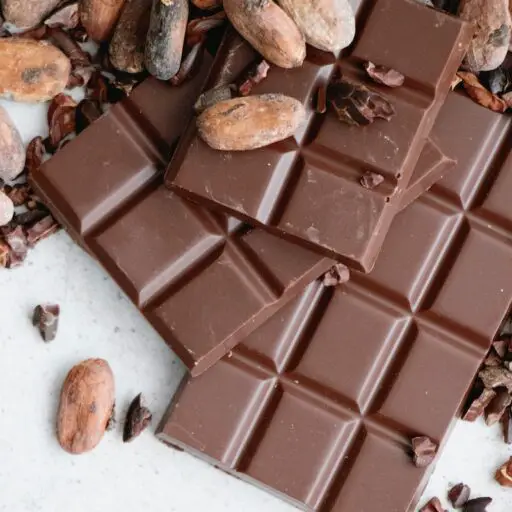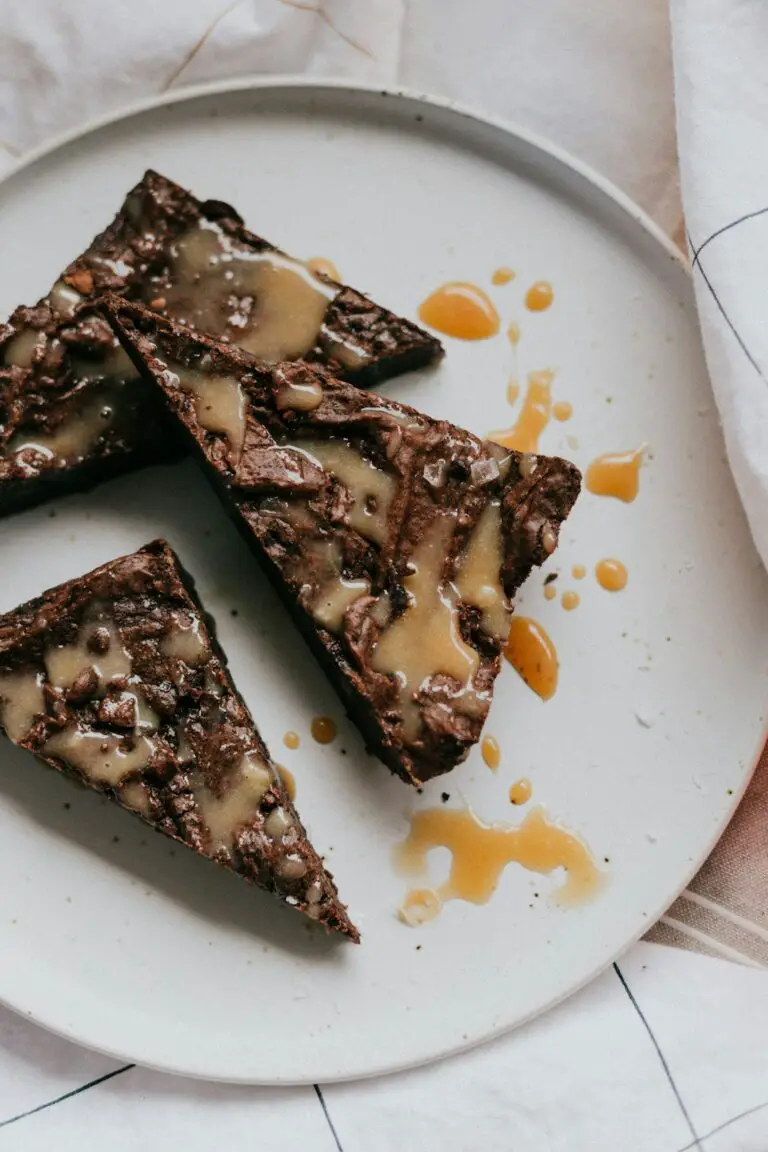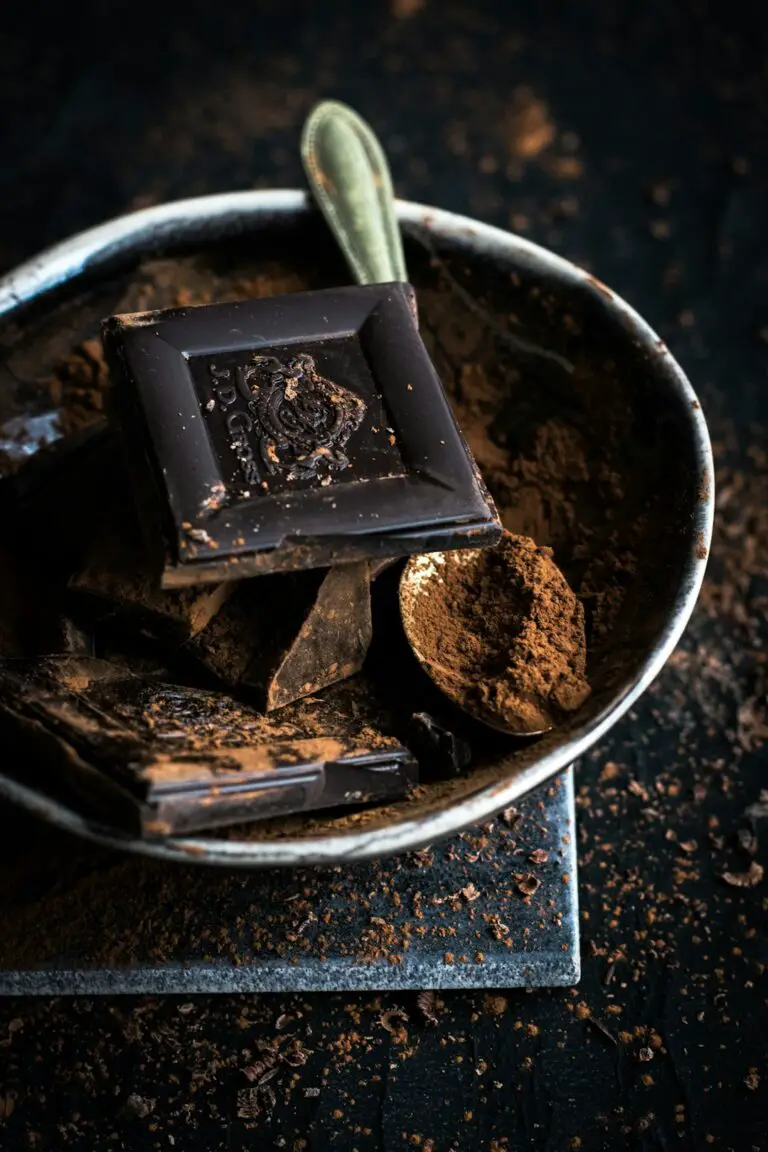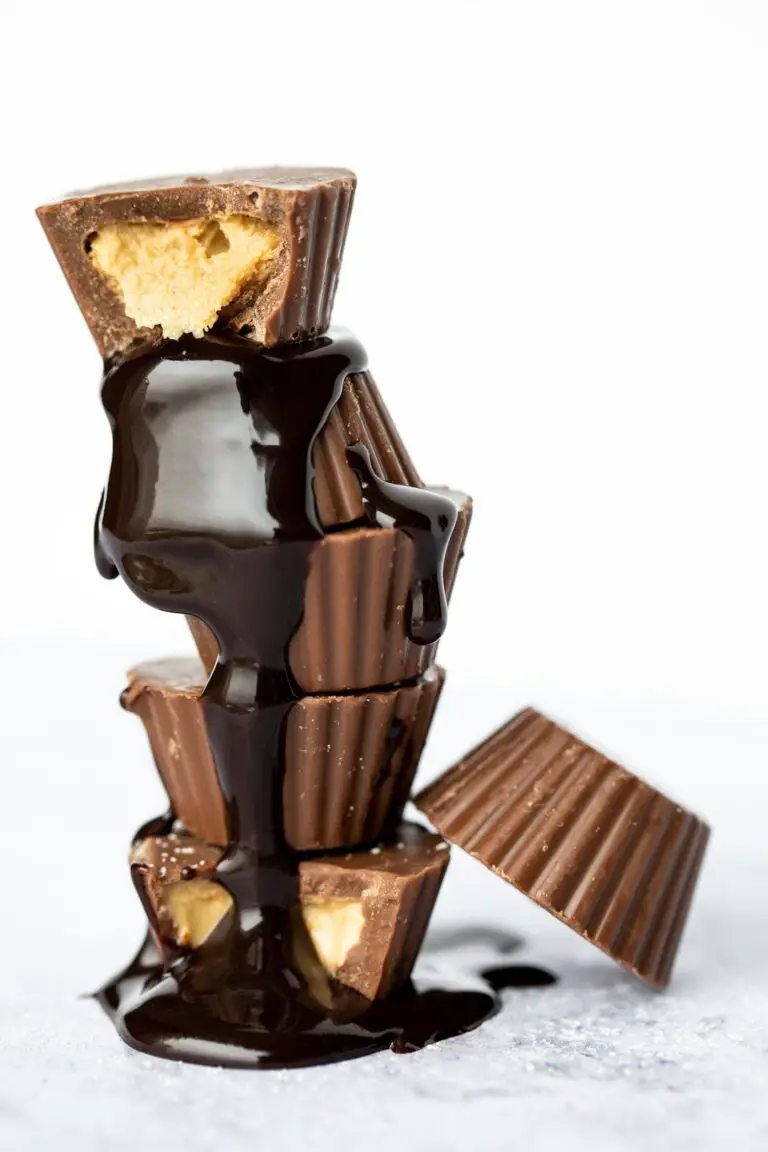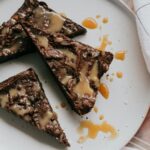Support our educational content for free when you purchase through links on our site. Learn more
Raw Cacao vs Processed Chocolate: 6 Longevity Secrets Revealed 🍫 (2025)
Have you ever wondered why some chocolate bars boast health benefits while others seem like mere sugary indulgences? The secret lies in the journey from raw cacao bean to processed chocolate bar—and it’s a journey that can make or break the longevity perks hidden inside. As expert tasters at Chocolate Brands™, we’ve uncovered the surprising science behind raw cacao’s superfood status and how processing can dramatically alter its health potential.
Did you know that raw cacao contains up to 10 times more antioxidants than processed chocolate? Yet, not all processed chocolates are created equal—some still pack a punch if you know what to look for. Stick around as we unravel the 6 key benefits of raw cacao, decode chocolate labels, and share our top brand picks that deliver real longevity boosts without sacrificing flavor. Ready to savor chocolate that loves you back? Let’s dive in!
Key Takeaways
- Raw cacao is a powerhouse of antioxidants and flavanols, crucial for heart, brain, and skin health.
- Processing steps like roasting and Dutching drastically reduce cacao’s beneficial compounds, often by up to 90%.
- High-quality dark chocolate (70%+ cacao, non-alkalized) can still offer meaningful health benefits.
- Look for short ingredient lists, natural (non-alkalized) cocoa, and ethical certifications to maximize longevity benefits.
- Mindful consumption and proper storage enhance cacao’s health effects and flavor experience.
- Beware of added sugars, unhealthy fats, and heavy metals when choosing chocolate products.
For those eager to shop smart, check out our expert picks for raw cacao powders and premium dark chocolates that truly honor the bean’s longevity promise in our Recommended Links.
Table of Contents
- ⚡️ Quick Tips and Facts: Your Cacao Cheat Sheet
- 🍫 The Ancient Roots of Cacao: A Journey from Bean to Bliss
- 🌱 Raw Cacao Unveiled: What Makes It a Longevity Powerhouse?
- 🔥 The Transformation: How Processing Changes Chocolate’s Longevity Potential
- ❤️ Cacao’s Longevity Blueprint: Unpacking the Health Benefits
- 1. Cardiovascular Champion: Supporting a Strong Heart
- 2. Brain Booster: Enhancing Cognitive Function and Mood
- 3. Inflammation Fighter: Calming the Body’s Internal Storms
- 4. Gut Guardian: Nurturing Your Microbiome for Overall Wellness
- 5. Blood Sugar Balancer: A Sweet Deal for Metabolic Health
- 6. Skin Savior: Protecting Your Glow from Within
- 🔍 Decoding the Label: Your Guide to Longevity-Friendly Chocolate
- 🌟 Our Expert Picks: Brands That Deliver on Cacao’s Promise
- 💡 Maximizing Your Cacao Experience: Tips from Chocolate Brands™
- ❌ Potential Pitfalls & Considerations: A Balanced View
- 🤔 Frequently Asked Questions (FAQ) About Cacao and Longevity
- ✅ Conclusion: The Sweet Path to a Longer, Healthier Life
- 🔗 Recommended Links: Dive Deeper into the World of Cacao
- 📚 Reference Links: Our Sources for the Sweet Science
⚡️ Quick Tips and Facts: Your Cacao Cheat Sheet
Welcome, fellow chocolate lovers! We’re the expert tasting team at Chocolate Brands™, and we’re about to embark on a delicious journey into the heart of cacao. Before we dive deep, here’s a quick rundown of what you need to know about the longevity benefits of raw cacao versus its more processed cousin, chocolate. Recent longevity studies on chocolate have shed fascinating light on this topic.
- Raw Cacao is an Antioxidant King 👑: Raw cacao boasts a higher antioxidant capacity than even green tea, black tea, and red wine. It’s packed with powerful plant compounds called polyphenols, specifically flavanols.
- Processing is the Villain 🦹 ♂️: The journey from a raw cacao bean to a candy bar can be brutal for its health benefits. Manufacturing processes can slash the polyphenol content from 100% down to a mere 10%!
- “Dutching” is a Dirty Word (for Health): The alkalization process, also known as Dutching, is used to mellow the flavor of cocoa. Unfortunately, it significantly reduces the flavanol content. Look for “natural” or non-alkalized cocoa.
- Go for High Cacao Content ✅: When choosing chocolate, aim for at least 80% cacao content to maximize the health-boosting compounds and minimize added sugars.
- Heart and Brain Love Cacao ❤️🧠: The flavanols in cacao are linked to improved cardiovascular health by supporting blood flow and healthy blood pressure. They also act as a “nootropic,” enhancing brain function and mood.
- Read the Label Religiously: The first ingredient should always be cacao or a variant (cocoa beans, cocoa mass). If sugar is at the top of the list, put it back!
🍫 The Ancient Roots of Cacao: A Journey from Bean to Bliss
Ever wonder how this magical food came to be? Let’s take a quick trip back in time. Long before it was molded into bars and wrapped in foil, the cacao bean was revered by ancient civilizations like the Maya and Aztecs. For them, this wasn’t just a treat; it was a divine gift, a form of currency, and a key component in sacred rituals. They consumed it as a bitter, frothy drink, often spiced with chili and other local ingredients. This ancient “food of the gods” was recognized for its energizing and medicinal properties, a secret we’re only now fully rediscovering with modern science. Delve deeper into the fascinating Chocolate History and Origins on our site!
🌱 Raw Cacao Unveiled: What Makes It a Longevity Powerhouse?
So, what exactly is this “raw cacao” we keep raving about? Think of it as the purest, most unadulterated form of chocolate. Raw cacao beans are simply fermented and dried, never roasted at high temperatures. This minimal processing is the key to preserving the incredible array of nutrients that make it a true superfood for longevity.
🔬 The Science of Cacao: Polyphenols, Flavanols, and Antioxidants Galore!
Let’s get a little nerdy, shall we? The magic of cacao lies in its rich concentration of polyphenols, a class of antioxidant compounds. Cacao is particularly abundant in a subgroup of polyphenols called flavan-3-ols (or flavanols), with the most notable being epicatechin and procyanidins.
These aren’t just fancy words; they are the cellular bodyguards of the plant world. A scientific review published in Frontiers in Immunology highlights that cocoa’s antioxidant properties are responsible for many of its pharmacological effects, including the inhibition of lipid peroxidation and the protection of LDL-cholesterol (the “bad” kind) against oxidation.
| Compound Group | Key Players in Cacao | Primary Role |
|---|---|---|
| Polyphenols | Flavanols, Anthocyanidins | Broad-spectrum antioxidants |
| Flavanols | Epicatechin, Catechin, Procyanidins | Heart health, brain function, anti-inflammatory |
| Theobromine | N/A | Mild stimulant, mood elevator |
| Minerals | Magnesium, Iron, Potassium, Zinc | Energy, relaxation, oxygen transport |
💪 Why Antioxidants Matter for Healthy Aging
Imagine your body is a bustling city. Every day, this city produces pollution in the form of free radicals. These are unstable molecules that can damage cells, proteins, and DNA through a process called oxidative stress. This damage is a major driver of aging and chronic diseases like cancer.
Antioxidants are the cleanup crew. They neutralize free radicals, protecting your cells from damage and helping to preserve their function. By loading up on antioxidant-rich foods like raw cacao, you’re essentially giving your body’s defense system a powerful boost, contributing to a longer, healthier life.
🔥 The Transformation: How Processing Changes Chocolate’s Longevity Potential
Here’s the heartbreaking truth: not all chocolate is created equal. The journey from a potent, bitter bean to a sweet, smooth chocolate bar involves several steps that can strip away the very compounds that offer longevity benefits.
♨️ Roasting: Flavor Boost or Nutrient Bust?
The first major hurdle for cacao’s nutrients is roasting. Most commercial chocolate makers roast beans at high temperatures to develop that classic “chocolatey” flavor and kill bacteria. While this is great for taste, the intense heat can destroy a significant portion of the delicate, heat-sensitive flavanols. This is the primary difference between “raw cacao” (unroasted or minimally heated) and “cocoa” (roasted).
🧪 Alkalization (Dutching): The Dark Side of Dark Chocolate’s Health Halo
Have you ever seen “cocoa processed with alkali” or “Dutched cocoa” on an ingredient list? Run! 🏃 ♀️ This process involves washing the cocoa beans in an alkaline solution to neutralize their acidity. This results in a darker color and a milder, less bitter flavor.
The problem? It’s a nutritional catastrophe. According to the research, manufacturing processes can be so harsh that the final polyphenol content might plummet to just 10% of the original bean’s content. Alkalization is a major culprit in this nutrient destruction. So while that dark, smooth chocolate might seem healthy, if it’s been Dutched, its antioxidant power has been severely compromised.
🍬 Sugar, Fat, and Additives: The Uninvited Guests in Your Longevity Journey
Finally, we come to the most obvious offenders: sugar, unhealthy fats, and artificial ingredients. Many commercial chocolate bars, even some dark ones, are loaded with sugar, which can counteract cacao’s benefits for metabolic health. Some manufacturers also replace the natural, healthy cocoa butter with cheaper vegetable fats and add emulsifiers and artificial flavors. These additions turn a potential superfood into a simple candy.
❤️ Cacao’s Longevity Blueprint: Unpacking the Health Benefits
When you choose the right kind of cacao, you’re unlocking a treasure trove of health benefits that can contribute to a longer, more vibrant life. Let’s explore the science-backed ways high-flavanol cacao supports your body. For more on this, check out our Chocolate Health Benefits section.
1. Cardiovascular Champion: Supporting a Strong Heart
This is where cacao truly shines. The flavanols in cacao have been shown to improve endothelial function—that’s the health of the lining of your blood vessels. They help produce nitric oxide, which relaxes blood vessels, improves blood flow, and can lead to lower blood pressure.
- Fact Check: A meta-analysis of studies suggested that cocoa consumption could lower systolic blood pressure by an average of 4.5 mmHg and diastolic blood pressure by 2.5 mmHg.
- Bonus: Cacao polyphenols also help protect LDL cholesterol from oxidative damage, a key step in the development of atherosclerosis (hardening of the arteries).
2. Brain Booster: Enhancing Cognitive Function and Mood
Feeling good is part of living long! Cacao is a natural nootropic, meaning it can help enhance brain function.
- Increased Blood Flow: By improving blood flow, cacao ensures your brain gets the oxygen and nutrients it needs to perform at its best, potentially reducing the risk of age-related cognitive decline.
- The Bliss Molecule: Cacao contains compounds like phenylethylamine (PEA) and anandamide (dubbed the “bliss molecule”), which can stimulate the release of endorphins and promote feelings of happiness and well-being.
- Gentle Energy: It also contains theobromine, a mild stimulant related to caffeine that can improve focus without the jittery side effects.
3. Inflammation Fighter: Calming the Body’s Internal Storms
Chronic inflammation is a silent enemy linked to nearly every major age-related disease. The potent polyphenols in cacao have powerful anti-inflammatory effects. They work at a cellular level to modulate inflammatory pathways, such as inhibiting nuclear factor-κB (NF-κB) activation, which helps to calm the body’s inflammatory response and support overall health.
4. Gut Guardian: Nurturing Your Microbiome for Overall Wellness
A happy gut is foundational to a long and healthy life. The polyphenols and fiber in cacao act as prebiotics, feeding the beneficial bacteria in your gut. A healthy gut microbiome is crucial for everything from proper digestion and nutrient absorption to a strong immune system and even mental health.
5. Blood Sugar Balancer: A Sweet Deal for Metabolic Health
Surprisingly, this precursor to a sweet treat can actually help with blood sugar regulation. Studies have shown that flavanol-rich cacao can improve insulin sensitivity, helping your body use glucose more effectively. One 15-day study on hypertensive individuals with impaired glucose tolerance found that daily consumption of flavanol-rich dark chocolate decreased insulin resistance and increased insulin sensitivity. This makes it a valuable tool in reducing the risk of metabolic syndrome and type 2 diabetes.
6. Skin Savior: Protecting Your Glow from Within
Want to keep that youthful glow? Cacao can help! Its antioxidants and flavanols improve blood circulation to the skin, which can increase skin density, hydration, and elasticity. Furthermore, these powerful compounds can help protect the skin from oxidative damage caused by UV radiation from the sun.
🔍 Decoding the Label: Your Guide to Longevity-Friendly Chocolate
Navigating the chocolate aisle can be tricky. As your trusted guides, we’re here to help you become a savvy chocolate detective. Here’s what to look for to ensure you’re getting a longevity-boosting product.
1. The Cocoa Percentage Puzzle: More Isn’t Always Better (But Often Is!)
The percentage on a chocolate bar refers to the total amount of ingredients by weight that come from the cacao bean (cocoa solids + cocoa butter).
- ✅ Aim for 70% or higher. We personally recommend starting at 80% for the best health-to-taste ratio, as suggested by health coaches.
- ❌ Beware the 100% trap! While 100% cacao chocolate has no added sugar, it can be intensely bitter and chalky if not made by a skilled chocolatier. It’s an acquired taste, but one worth exploring!
2. Ingredient List Investigations: What to Seek and What to Skip
The shorter the ingredient list, the better.
- ✅ Look for: Cacao beans, cocoa mass, cocoa butter, cacao. A small amount of sugar (preferably unrefined like coconut sugar) is acceptable.
- ❌ Avoid: Sugar as the first ingredient, vegetable oils (palm oil, soybean oil), high-fructose corn syrup, artificial flavors, and emulsifiers like soy lecithin (though small amounts are common and generally fine).
3. “Natural” vs. “Alkalized”: The Key Distinction for Health Benefits
This is the most important takeaway!
- ✅ Choose “Natural” or “Non-Alkalized” Cocoa Powder: This means the flavanols are largely intact. It will have a lighter brown color and a more complex, acidic flavor.
- ❌ Skip “Dutched” or “Processed with Alkali” Cocoa: This has been chemically treated, destroying most of the beneficial polyphenols.
4. Third-Party Certifications: Trust Marks for Quality and Ethics
Look for these logos to ensure you’re buying a high-quality, ethically produced product:
- USDA Organic: Ensures the cacao was grown without synthetic pesticides and fertilizers.
- Fair Trade Certified: Guarantees that farmers received a fair price for their cacao beans.
- Direct Trade: Often even better than Fair Trade, this means the chocolate maker works directly with the farmers, fostering a closer relationship and often paying a premium for quality.
🌟 Our Expert Picks: Brands That Deliver on Cacao’s Promise
After countless (and we mean countless) tasting sessions, we’ve curated a list of brands that we believe truly honor the cacao bean and its longevity potential. You can find more in-depth analyses in our Chocolate Brand Comparisons and Chocolate Bar Reviews.
1. For the Raw Cacao Enthusiast
For those who want cacao in its most potent, unprocessed form for smoothies, baking, or homemade hot chocolate.
- Navitas Organics Cacao Powder: A go-to in our kitchens. It’s organic, non-alkalized, and has a rich, deep flavor. Perfect for getting your daily dose of flavanols.
👉 Shop Navitas Organics on: Amazon | Walmart | Navitas Organics Official Website
2. For the High-Quality Dark Chocolate Lover
When you want the convenience of a bar without compromising on quality.
- Hu Kitchen Simple Dark Chocolate: This brand is a game-changer. Their bars are free of refined sugar, dairy, soy lecithin, and palm oil. The 85% bar is a team favorite.
- Theo Chocolate Pure Dark 85%: An excellent choice that is both organic and fair trade. Theo is a bean-to-bar maker, meaning they control the entire process, ensuring quality and ethical sourcing.
👉 Shop these brands on:
- Hu Kitchen: Amazon | Walmart | Hu Kitchen Official Website
- Theo Chocolate: Amazon | Walmart | Theo Chocolate Official Website
3. For the Conscious Consumer
For those who value ethics and sustainability as much as flavor and health.
- Alter Eco Deep Dark Blackout 85%: Not only is this bar organic and fair trade, but Alter Eco is also committed to regenerative agriculture, which helps to restore ecosystems. The chocolate is superb, with a smooth melt and fruity notes.
👉 Shop Alter Eco on: Amazon | Walmart | Alter Eco Official Website
💡 Maximizing Your Cacao Experience: Tips from Chocolate Brands™
Owning the best cacao is one thing; getting the most out of it is another. Here are a few of our pro tips.
1. Mindful Consumption: Savoring Every Bite
Don’t just eat your chocolate; experience it! A personal story: our lead taster, Jean-Pierre, once spent 20 minutes with a single square of 90% dark chocolate. He let it melt slowly, noting the evolving flavors—from earthy to fruity to nutty. This isn’t just for pleasure; mindful eating can increase satisfaction and prevent overconsumption.
2. Pairing for Power: Boosting Bioavailability
Want to help your body absorb more of those amazing flavanols? Try pairing your cacao with foods rich in quercetin, like apples, berries, or onions. Some research suggests this can enhance the bioavailability of the beneficial compounds. A handful of berries with your morning cacao smoothie? Delicious and strategic!
3. Storage Secrets: Keeping Your Cacao Fresh and Potent
Heat, light, and air are the enemies of fresh cacao.
- Store in a cool, dark, dry place. A pantry or cupboard is ideal.
- Avoid the refrigerator. Condensation can cause “sugar bloom,” that white, grainy coating on the surface. It’s harmless but affects the texture.
- Keep it sealed. Use an airtight container for powders and nibs to protect them from moisture and strong odors.
❌ Potential Pitfalls & Considerations: A Balanced View
We love cacao, but it’s important to have a balanced perspective. Here are a few things to keep in mind.
Caffeine Content: A Jittery Jolt or a Gentle Lift?
Cacao does contain caffeine, but it has significantly more theobromine, a related compound that provides a much milder, longer-lasting, and less jittery energy boost. However, if you are highly sensitive to caffeine, you may want to enjoy your cacao earlier in the day.
Heavy Metals: Navigating the Concerns
There have been reports about the presence of heavy metals like cadmium and lead in some cocoa products. Cacao plants can absorb these metals from the soil. Reputable brands, like the ones we recommended, often test their products for heavy metal content. Choosing products from brands that are transparent about their sourcing and testing can help mitigate this concern.
Calorie Count: Enjoying in Moderation
While packed with nutrients, cacao and dark chocolate are calorie-dense due to their fat content (healthy cocoa butter!). As The Well wisely notes, “moderation is key!” A square or two a day, or a tablespoon of raw cacao powder, is a great way to reap the benefits without overdoing it on calories.
✅ Conclusion: The Sweet Path to a Longer, Healthier Life

After our deep dive into the world of raw cacao versus processed chocolate, it’s clear that raw cacao reigns supreme as a longevity ally—thanks to its rich polyphenol content, minimal processing, and potent antioxidant power. However, not all processed chocolates are created equal. Some high-quality dark chocolates, especially those with 80%+ cacao and minimal processing (no Dutching), still retain significant health benefits and can be a delicious, convenient way to enjoy cacao’s perks.
Positives of Raw Cacao:
- Maximum antioxidant and flavanol content preserved
- Supports heart health, brain function, and inflammation control
- Rich in essential minerals like magnesium and iron
- Versatile for cooking, smoothies, and teas
Negatives of Raw Cacao:
- Bitter, intense flavor that may require an acquired taste
- Less convenient as it often requires preparation
- Potential concerns with heavy metals if sourcing is unknown
Positives of High-Quality Processed Chocolate:
- More palatable and accessible for everyday enjoyment
- Still contains beneficial flavanols if non-alkalized and high cacao percentage
- Ethical and sustainable options available from brands like Theo and Alter Eco
Negatives of Processed Chocolate:
- Processing (especially Dutching) reduces flavanol content drastically
- Added sugars and fats can negate health benefits
- Variable quality and transparency among brands
Our expert tasting team confidently recommends incorporating raw cacao powder like Navitas Organics for maximum longevity benefits, complemented by high-quality dark chocolate bars from Hu Kitchen or Theo Chocolate for indulgence without guilt. Remember, mindful consumption and label vigilance are your best friends on this sweet journey.
So, next time you reach for chocolate, ask yourself: do you want a fleeting sugar fix or a lasting health boost? The answer lies in choosing cacao wisely—and savoring every bite.
🔗 Recommended Links: Dive Deeper into the World of Cacao
👉 Shop Our Top Raw Cacao and Chocolate Picks:
-
Navitas Organics Cacao Powder:
Amazon | Walmart | Navitas Organics Official Website -
Hu Kitchen Simple Dark Chocolate (85%):
Amazon | Walmart | Hu Kitchen Official Website -
Theo Chocolate Pure Dark 85%:
Amazon | Walmart | Theo Chocolate Official Website -
Alter Eco Deep Dark Blackout 85%:
Amazon | Walmart | Alter Eco Official Website
Books to Expand Your Cacao Knowledge:
-
The True History of Chocolate by Sophie D. Coe & Michael D. Coe
Amazon Link -
Cocoa and Chocolate in Human Health and Disease edited by Raymond R. Watson
Amazon Link -
The Chocolate Tree: A Natural History of Cacao by Allen M. Young
Amazon Link
🤔 Frequently Asked Questions (FAQ) About Cacao and Longevity

What are the health benefits of raw cacao compared to processed chocolate?
Raw cacao retains a higher concentration of polyphenols, especially flavanols like epicatechin, which are powerful antioxidants. These compounds support cardiovascular health, improve brain function, reduce inflammation, and promote healthy aging. Processed chocolate, especially when heavily processed or alkalized (Dutched), loses much of these beneficial compounds. However, high-quality dark chocolate with minimal processing still offers some health benefits, albeit less potent than raw cacao.
Read more about “How Longevity Studies Reveal Chocolate’s Brain Boost (2025) 🍫🧠”
Does raw cacao have more antioxidants than processed chocolate?
Yes. Raw cacao is one of the richest sources of antioxidants in the food world, surpassing green tea, black tea, and red wine in polyphenol content. Processing steps such as roasting and alkalization can reduce antioxidant levels by up to 90%. Therefore, raw cacao powder or minimally processed chocolate bars provide significantly more antioxidants.
Read more about “🍫 5 Types of Chocolate Linked to Increased Longevity (2025)”
How does processed chocolate affect longevity and heart health?
Processed chocolate’s impact depends on how much of the original flavanols remain and the added ingredients. High sugar and unhealthy fats can negate benefits and contribute to metabolic issues. However, dark chocolate with high cacao content (70%+) and minimal processing can still improve endothelial function, lower blood pressure, and reduce LDL oxidation, supporting heart health and longevity.
Read more about “🍫 7 Surprising Epigenetic Effects of Chocolate on Aging (2025)”
Can eating raw cacao improve cognitive function over processed chocolate?
Absolutely. Raw cacao’s flavanols enhance cerebral blood flow and neuroplasticity, which are crucial for memory, learning, and mood regulation. The presence of theobromine and mood-enhancing compounds like phenylethylamine also contribute to cognitive benefits. Processed chocolate with diminished flavanol content offers fewer cognitive perks.
What role does raw cacao play in anti-aging compared to processed chocolate?
Raw cacao’s high antioxidant and anti-inflammatory properties help neutralize free radicals and reduce chronic inflammation—two major drivers of aging. Processed chocolate, especially if heavily refined, offers fewer of these protective compounds. Thus, raw cacao is a more potent anti-aging food.
Read more about “What Is Luxury Chocolate? 10 Secrets to Gourmet Bliss 🍫 (2025)”
Is raw cacao better for weight management than processed chocolate?
Raw cacao itself is nutrient-dense but low in sugar and unhealthy fats, making it a better choice for weight management. Processed chocolates often contain added sugars and fats, increasing calorie load and potentially contributing to weight gain if consumed excessively. Mindful consumption of raw cacao or high-quality dark chocolate supports metabolic health.
Read more about “🍫 16 Healthiest Chocolates on the Market You Must Try (2025)”
How do the nutritional profiles of raw cacao and processed chocolate differ?
| Nutrient/Compound | Raw Cacao (per 10g) | Processed Dark Chocolate (85%) (per 10g) |
|---|---|---|
| Total Polyphenols | ~600 mg (varies) | ~60-200 mg (varies by processing) |
| Flavanols (Epicatechin) | High (~100-200 mg) | Reduced significantly |
| Sugar | Minimal | Varies, often 5-10g+ |
| Fat (mostly cocoa butter) | ~6g | ~5-7g |
| Minerals (Mg, Fe, K) | High | Moderate to high |
| Calories | ~50 | ~50-60 |
Note: Values vary by brand and processing.
📚 Reference Links: Our Sources for the Sweet Science
- Cocoa Polyphenols and Health Benefits: PMC Article
- Health Coach Tip: Why Cacao? | THE WELL: The Well
- Navitas Organics Official Website: navitasorganics.com
- Hu Kitchen Official Website: hukitchen.com
- Theo Chocolate Official Website: theochocolate.com
- Alter Eco Official Website: alterecofoods.com
- American Heart Association on Chocolate and Heart Health: heart.org
- National Institutes of Health on Antioxidants: nih.gov
- Harvard T.H. Chan School of Public Health on Chocolate: hsph.harvard.edu
We hope this comprehensive guide empowers you to choose and enjoy cacao in a way that supports your longevity and delight. Remember, the best chocolate is the one that nourishes both your body and soul! 🍫✨
